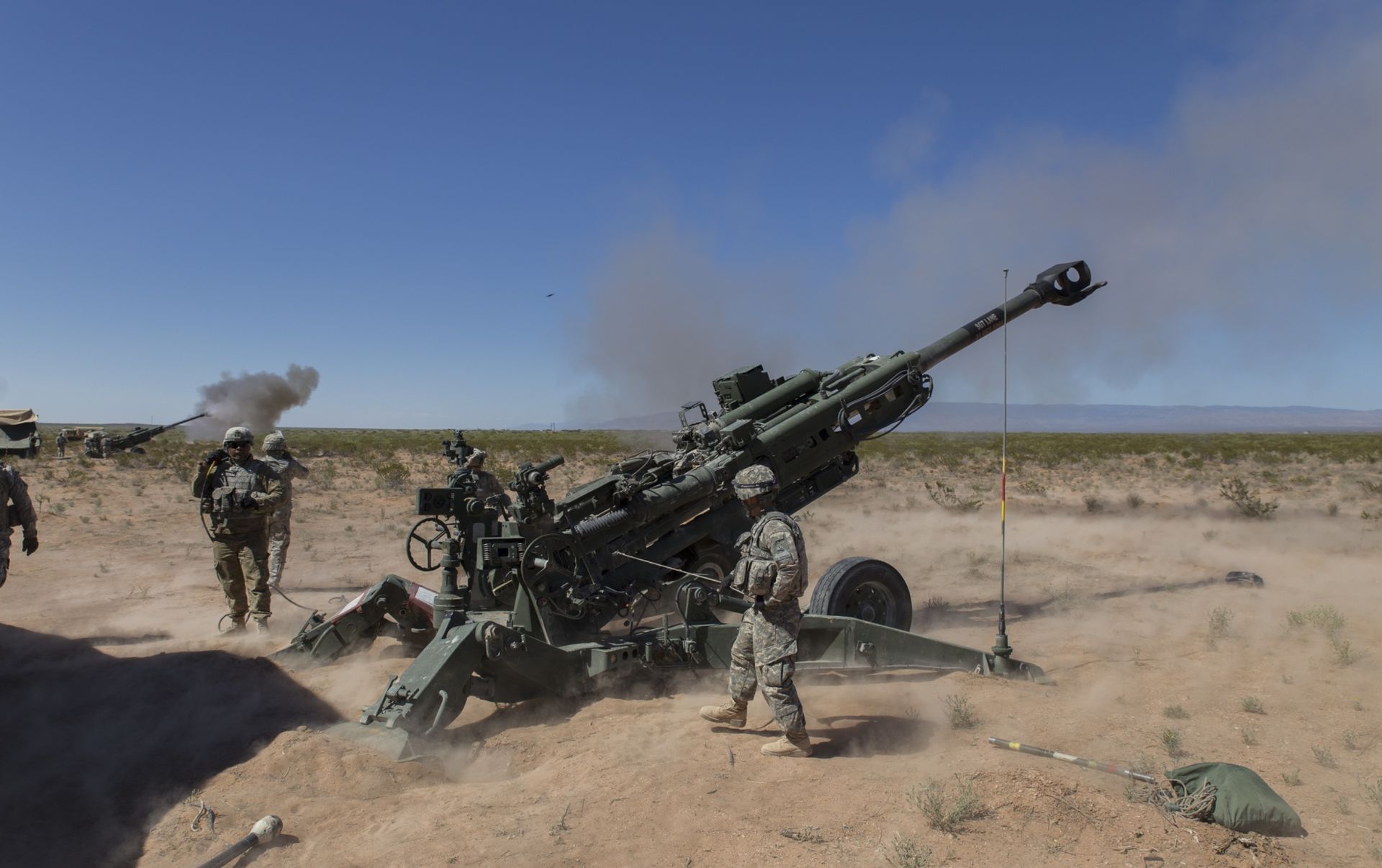Soldiers and Airmen came together to build confidence and proficiency during Hustler Trough III by engaging targets with integrated and synchronized mortars, artillery, infantry and joint fire. The weeklong exercise began, May 23, with a rehearsal of concept drill followed by three days of live-fire. Hosted by 1st Armored Division, Hustler Trough is a biannual event held to train and expand understanding during joint operations.
“We are training on how to build common situational awareness and understanding in engaging targets in a joint environment,” said Col. Andrew Rendon, commander, Division Artillery, 1st Armored Division.
Weeks of preparation and careful coordination to combine ground maneuverability and air assets to engage and destroy targets was carefully executed by DIVARTY, 7th Air Support Operations Squadron, 1st Combat Aviation Brigade, 1st Brigade Combat Team and the 66th Weapons Squadron, Nellis Air Force Base, Nevada.
During this unique training, Soldiers worked closely with Air Force Joint Terminal Attack Controllers and pilots to coordinate “air sticks” from F-16 Fighting Falcons, A-10C Thunderbolt IIs and the Boeing B-52 Stratofortress with their ground forces. Targets were destroyed by volleys of cannon fire and strafing runs or munition drops.
Fort Bliss’ large training area allows for the use of heavy munitions during a field training exercise.
Soldiers and Airmen worked together as they would in a joint or NATO environment. Soldiers engaged targets with indirect fires or identified their location with their Stryker team, and then a JTAC would radio in for air support. The two branches developed camaraderie and trust for a seamless working environment.
JTACS, Joint Fires Observers and Forward Air Controllers-Airborne, used this time to recertify as well as refine their expertise in their respective fields.
Instructors assigned to 66th Weapons Squadron had the chance to oversee an assault by Company C, 3rd Battalion, 41st Infantry Regiment, 1st BCT, 1st AD, and used the opportunity to instruct the JTAC personnel assigned to them how to better integrate air support.
“Having the pilots with us on the ground is something we really need to take advantage of … (it) really opened our eyes and showed us a few different types of techniques we could use,” said Senior Airman Eric Sander, a JTAC assigned to 7th ASOS.
After this exercise, Soldiers, Airmen and pilots had a better understanding of each other’s roles in the battlefield and are better prepared to work together.
“This is an important training exercise because joint fires is really hard to train on … because a lot of the munitions you employ, you don’t (fire) fairly regularly in peace time just because of land restrictions and safety considerations,” Rendon said. “When we talk about preparing Soldiers for combat and doing things in training that you’re going to do in combat, this is one of the few opportunities we have to almost go full scale.”










